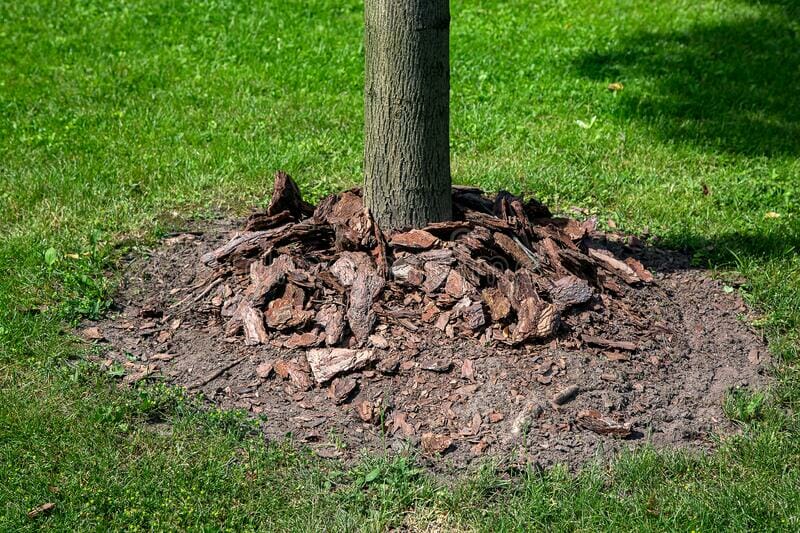Trees are an important part of any landscape. They provide shade, beauty, and homes for wildlife. But even the mightiest tree can be brought down by something as seemingly innocuous as mulch. Mulch volcanoes, also known as mulch mounds, are created when mulch is piled too high around the base of a tree. This can damage the tree’s roots and bark, and make it more susceptible to pests and disease. If you have mulch volcanoes in your yard, don’t despair. Here are some tips for removing them without harming your trees. First, gently remove the mulch from around the base of the tree. Next, use a garden hose or watering can soak the area around the roots. This will help to loosen the compacted soil and make it easier to work with. Finally, replant any grass or plants that were uprooted during the removal process. With a little care, you can have a healthy landscape – free of mulch volcanoes!
While a layer of mulch around trees can be beneficial, too much mulch can actually be harmful. When mulch is piled up against the trunk of a tree, it can prevent the tree from getting the oxygen it needs. This can cause the tree to suffocate and eventually die. In addition, mulch volcanoes provide a perfect hiding place for pests and diseases. insects and other pests can thrive in the warm, moist environment created by the mulch, and they can quickly spread to other parts of the tree. As a result, it’s important to keep mulch levels low around trees and to avoid piling it up against the trunk. By following these simple guidelines, you can help ensure that your trees stay healthy and disease-free.
Don’t Let Mulch Volcanoes Ruin Trees
You don’t have to live in Hawaii to see your clients’ landscapes ruined by volcanoes. If your crews are using improper mulching techniques and creating “mulch volcanoes,” they could ultimately be harming your clients’ trees.
If you’re not familiar with the term, a mulch volcano is when a tree ring is mulched with a big mound. Mulch is piled against the trunk of the tree. We see these all of the time and we know that it has become common practice, even though it’s wrong. The more often these are seen, the more accepted they become. That’s why it’s important that you are teaching crews the proper way to mulch.
But first, let’s talk about a few reasons why mulch volcanoes are so bad.
The problems with mulch volcanoes
The problem is mulch volcanoes is the mulch that is touching the tree’s trunk. This can encourage disease and decay because the tree trunk never gets a chance to dry out. This moist environment is not healthy for the tree and can lead to insect problems, fungal growth, and cracks in the bark.
Piling up mulch can also deprive the tree roots of oxygen. And if the soil remains too wet and soggy, the roots can begin to rot.
Oftentimes trees respond to these conditions by growing new roots into the mulch (instead of deep into the ground as they should). As the mulch degrades, the roots can become exposed, which is also problematic.
Over time, all of these problems can lead to the tree’s decline and possibly even death.
How to mulch properly
The proper way to mulch is actually to create a mulch ring that resembles a donut. The tree should be at the center with no mulch piled up against it.
Another bad mulching habit is over-mulching. Mulch rings are very beneficial, but there is such a thing as too much! Over-mulching can lead to water build-up and the mulch can become soggy and saturated. If too much water is being absorbed by the thick layer of mulch, it’s not reaching the tree’s roots where it is needed.
Of course, you don’t want to under-mulch, either. Aggressive weeds can break through a thin layer of mulch.
Talk to crews about proper mulching
All of these reasons are why it’s important to talk to your crews about proper mulching, even if they’ve worked in the industry before. The sheer number of mulch volcanoes that we see around our area tells us that plenty of landscaping companies are not practicing proper mulching habits. Because this improper practice has become so common, it gets repeated.
But you can break the bad mulching cycle by teaching crews to mulch the right way. It just may start saving trees in your area.

